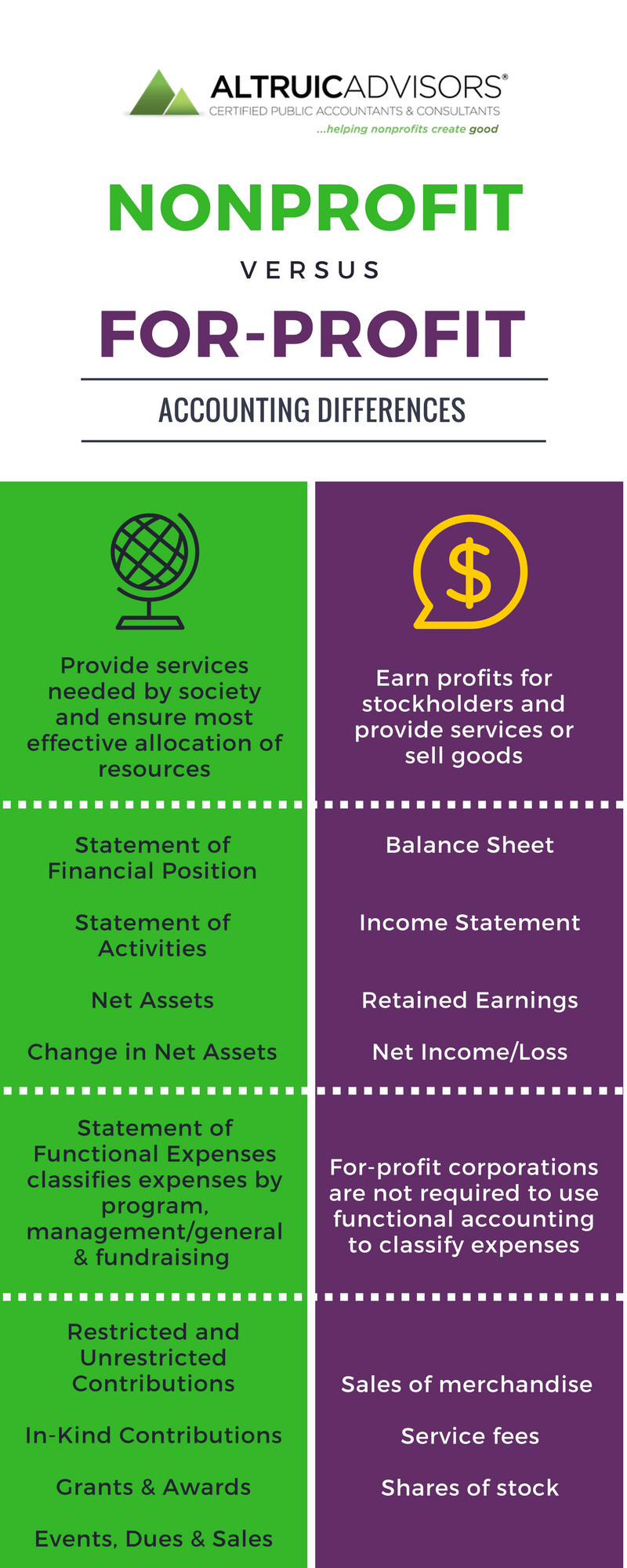No matter how often we’re reminded that nonprofit organizations are not the same as for-profit businesses it can be easy for some accountants to forget - especially if they spend the majority of their time working with for-profits. It’s a sad truth that for many traditional accounting firms, nonprofit engagements are a low priority and make up a smaller portion of their overall client base. We get it. The work is complex, resources are slim, and budgets are tight. Why do twice the work for half the pay?
At Altruic Advisors, nonprofit accounting is all we do. It’s not because we’re expecting to get rich, or because we love spending our weekends on QuickBooks. It’s because we believe the work that nonprofits do is important. We believe that nonprofit organizations deserve the same attention and quality of accounting as any for-profit business.
There are significant differences between nonprofit and for-profit accounting. Some of these differences are big - like the Statement of Functional Expenses and restricted contributions. Others are more subtle, like using different and specific terminology for what is (essentially) the same thing. For example, a statement showing your assets, liabilities, and the difference between the two is known in the for-profit world as a balance sheet. But for nonprofits, this is called your Statement of Financial Position. Minor difference? Sure, but if your accountant constantly asks to see your balance sheet instead of your Statement of Financial Position, that could be a sign that they’re not familiar or comfortable with nonprofit accounting.
We put together this handy infographic to demonstrate some of the key differences between nonprofits and for-profits. From net assets to retained earnings, the Nonprofit Versus For-Profit accounting guide gives you a quick way to brush up on the main differences and hold your accountants accountable.

